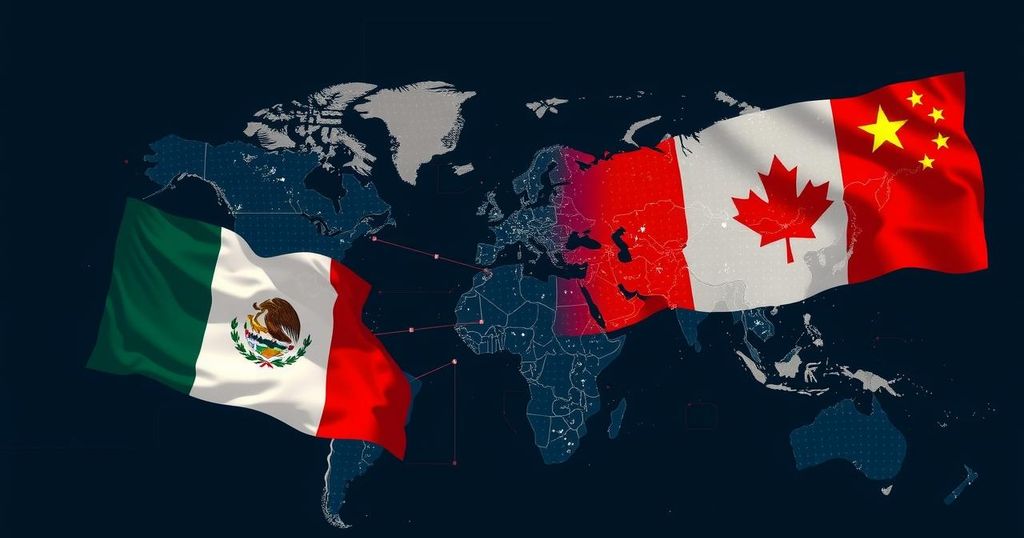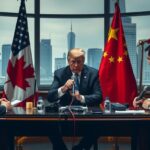Trump’s Proposed Tariffs on Mexico, Canada, and China as First Day Action
President-elect Donald Trump has announced intentions to impose a 25% tariff on products from Mexico and Canada and a 10% tariff on Chinese imports, effective January 20th. This action aims to tackle illegal immigration and drug trafficking, but the implementation details and economic consequences remain unclear.
President-elect Donald Trump has indicated his intention to impose significant tariffs on imports from Mexico, Canada, and China as a part of his administration’s strategy to combat illegal immigration and drug trafficking. In statements made via his Truth Social platform, Trump announced that on January 20th, he plans to issue an Executive Order to implement a 25% tariff on all goods from Mexico and Canada, which he asserts will remain until the flow of drugs, particularly fentanyl, and illegal immigration ceases. Additionally, he has proposed a 10% tariff increase on Chinese imports to address similar concerns regarding drug-related issues.
The prospect of these tariffs marks a substantial shift in trade policy, signaling a hardline stance that aligns with Trump’s ongoing focus on border security and drug enforcement. However, the actual implementation of these tariffs remains uncertain, with speculation regarding whetherTrump’s declarations serve as genuine policy intentions or are primarily tactical moves in negotiations ahead of his inauguration. The potential economic ramifications of such tariffs, both domestically and internationally, are yet to be fully assessed and understood.
The topic of tariffs and trade policy has gained significant attention, particularly in the context of the ongoing debates regarding illegal immigration and drug trafficking in the United States. Tariffs are taxes imposed on imported goods, which can influence prices, trade balances, and the domestic economy. Trump’s proposed tariffs reflect a continuation of his administration’s nationalist economic strategies, aimed at protecting American industries and reducing the influx of drugs associated with these countries. Understanding the implications of such tariffs is vital for comprehending their potential impact on U.S. trade relationships, the economy, and immigration policy.
In summary, Donald Trump’s proposed tariffs on Mexico, Canada, and China represent an aggressive approach to addressing concerns over illegal immigration and drug trafficking. While statements from Trump assert strong intentions to implement these tariffs shortly after taking office, the actual course of action remains to be seen. Observers will need to closely monitor these developments to determine their eventual impact on U.S. trade and economic policy.
Original Source: apnews.com








Post Comment